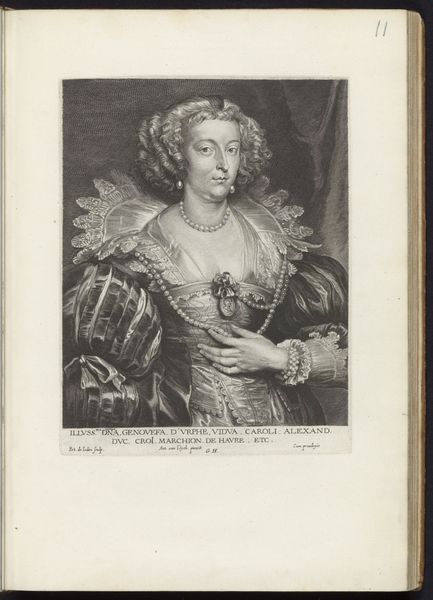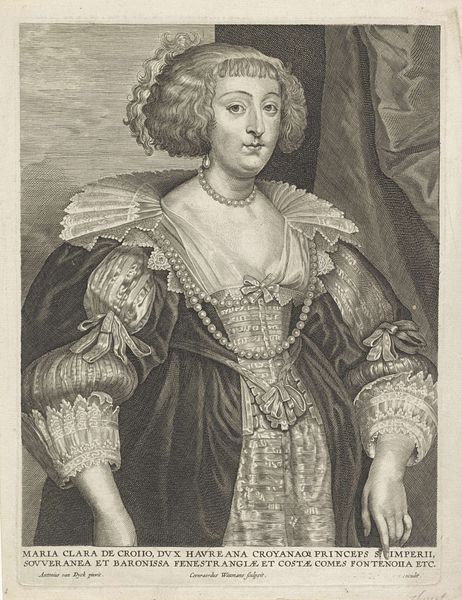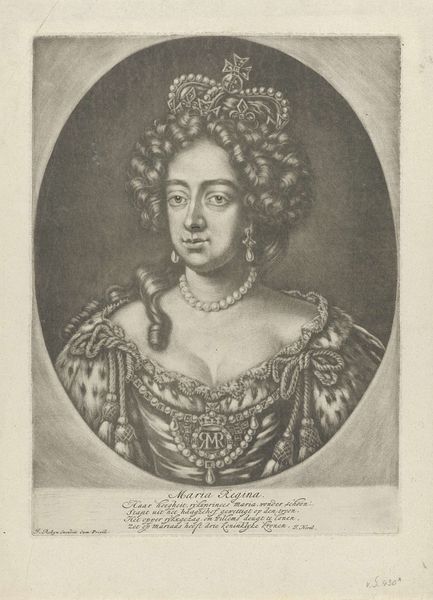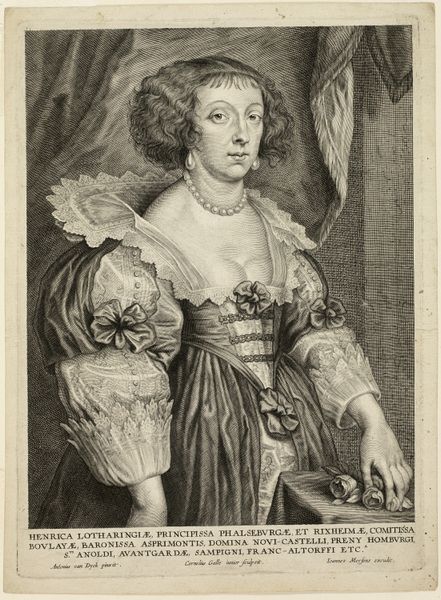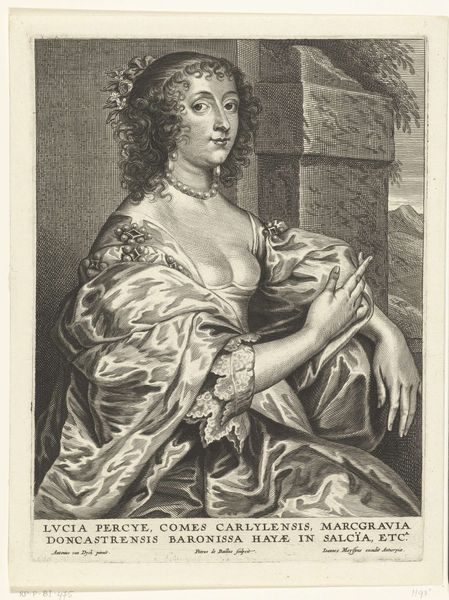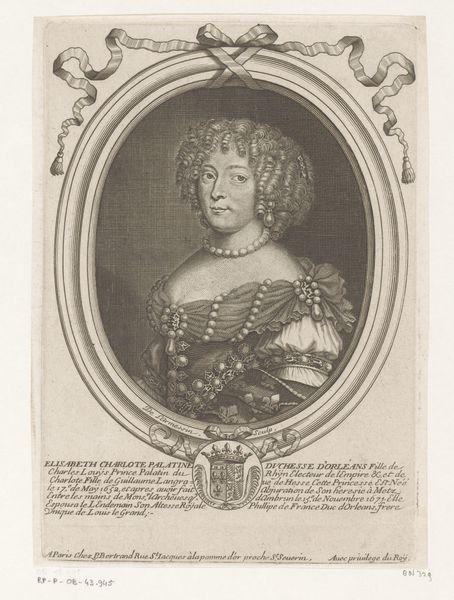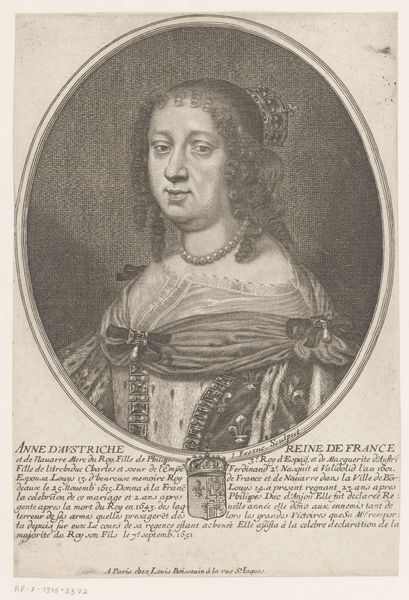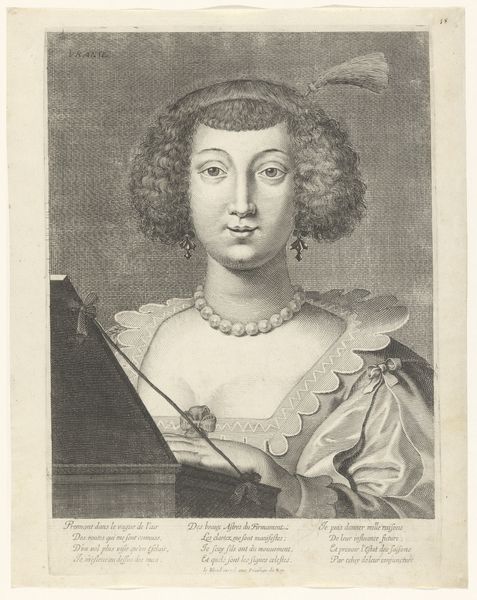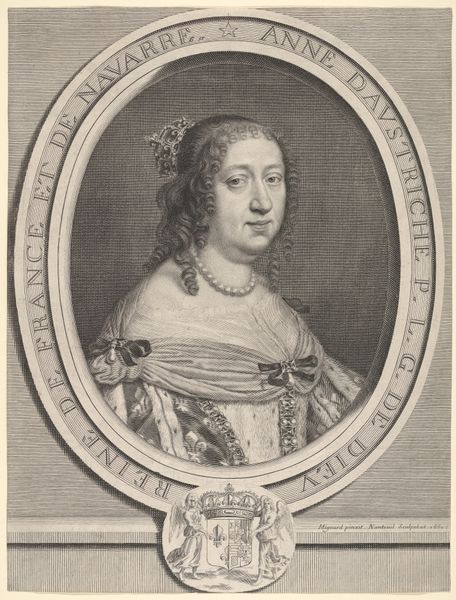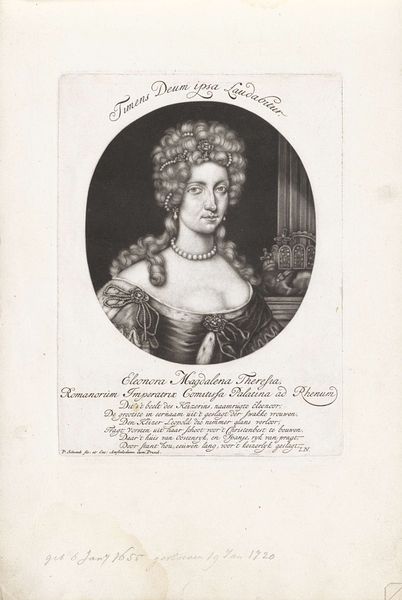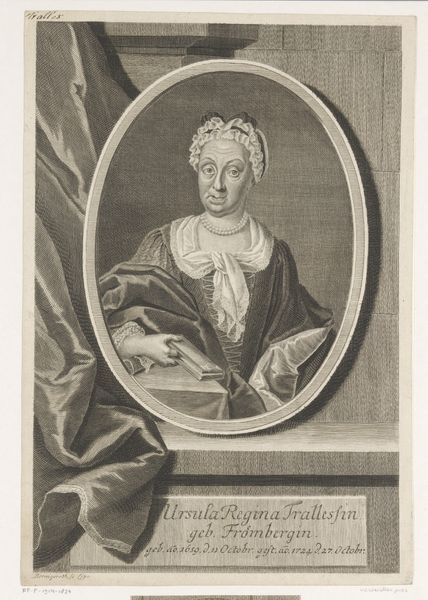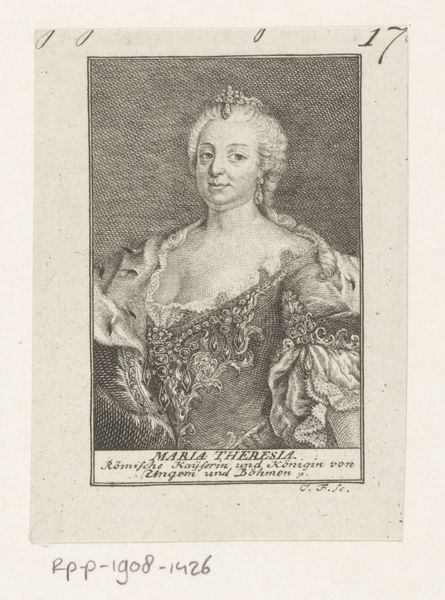
print, intaglio, engraving
#
portrait
#
baroque
# print
#
intaglio
#
old engraving style
#
pencil drawing
#
history-painting
#
engraving
Dimensions: height 245 mm, width 186 mm
Copyright: Rijks Museum: Open Domain
Editor: So, this is a print titled "Portrait of Geneviève d'Urf\u00e9" by Pieter de Jode II, made sometime between 1628 and 1670. It’s an intaglio print, currently at the Rijksmuseum. I am really struck by the subject’s poise, that controlled elegance, even the slight smile… What do you see in this portrait, considering its historical moment? Curator: Looking at this print, I see a careful construction of female aristocratic identity. It's fascinating to consider how Geneviève d'Urf\u00e9, as a widow, strategically utilized portraiture to maintain or perhaps even enhance her social standing. How does the symbolism embedded within her clothing and jewels contribute to this constructed image? Editor: The pearls seem significant, a classic symbol, maybe indicating wealth or status? Curator: Exactly. The pearls, the elaborate lace collar, the rich fabric of her dress—all these details weren't merely aesthetic choices. They were deliberate signifiers aimed at conveying power, virtue, and lineage. Moreover, this print was made to be distributed. It's a method to showcase a specific representation of womanhood and power within a society with very limited opportunities for women. Do you see how this imagery is also deeply tied to Baroque aesthetics? Editor: Yes, the dramatic textures and elaborate ornamentation. It seems almost performative in its opulence. Curator: Precisely. The Baroque period was all about projecting grandeur and authority. The portrait is part of this construction of power. And in Geneviève’s case, it underscores the complex negotiation women had to undertake in asserting their influence in a patriarchal society. What's one thing you'll remember when looking at similar portraits going forward? Editor: I’ll definitely pay closer attention to how these visual elements communicate social and political messages about gender and power. Curator: Indeed, it reveals the interesting ways the portrait became a tool for shaping public perception and, in some instances, for advocating agency within constrained circumstances.
Comments
No comments
Be the first to comment and join the conversation on the ultimate creative platform.
